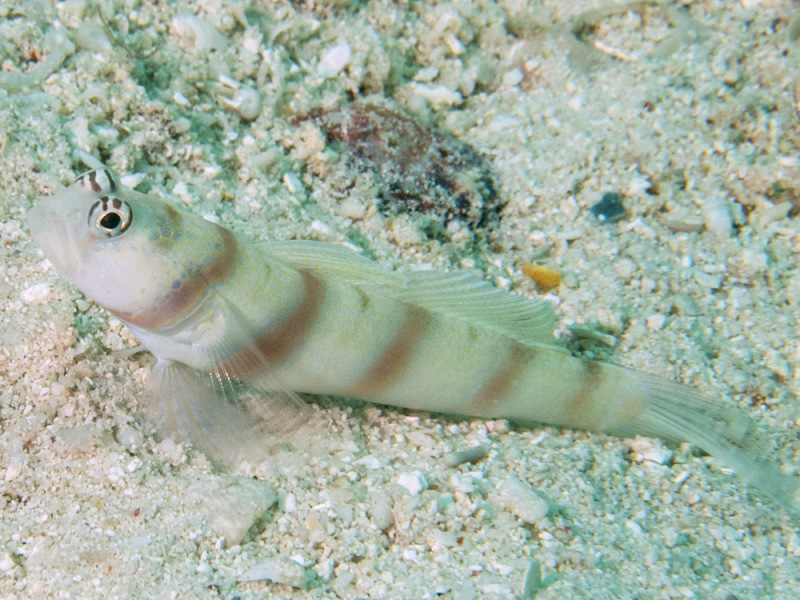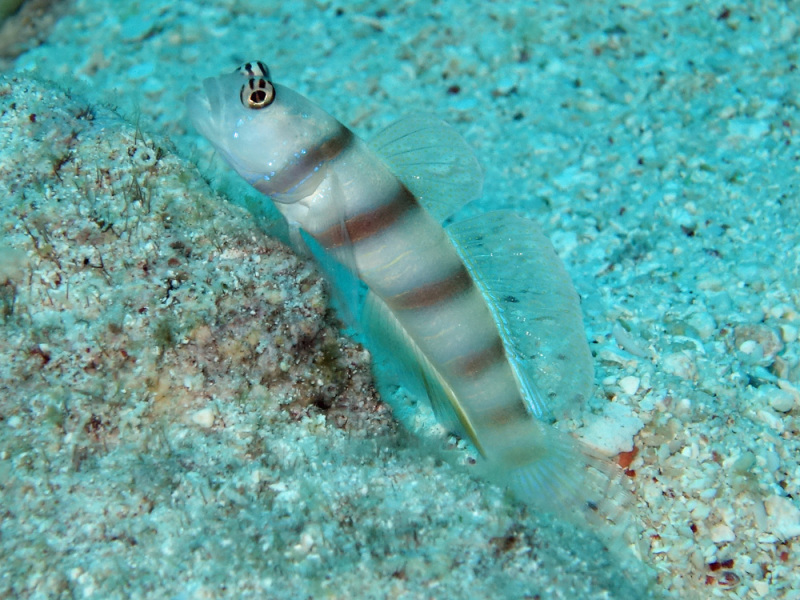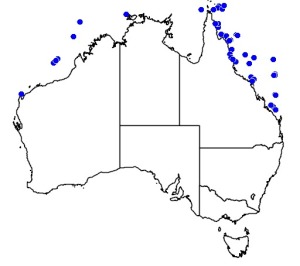Colours
Distinguishing features
A small, elongate whitish fish with a series of pale maroon vertical bars on the flanks. Usually seen at the entrance to the burrow it shares with an Alpheid shrimp.
Size
- Up to 13 cm (Standard length)
Depth range
- Depth range data is not yet available.
Synonyms
Similar taxa
Distribution
Distribution and habitat preferences
Areas of sand in shallow lagoons, within 10-20m of the reef edge.
Found over sandy bottoms in sheltered lagoonal habitats.
Behaviour
Steinitz's Shrimpgoby is one of many goby species that have a mutualistic relationship with Alpheid shrimps. The shrimp helps mainatain the burrow and guards the goby's eggs, while the goby stands guard at the entrance, watching for predators and feeding on plankton and detritus. The shrimp keeps one of its antennae in constant contact with the goby, and the two communicate with a series of tactile signals. Gobies are fast growing fishes and most do not live for more than 1 year.
Web resources
References
- Depczynski, M. and D.R. Bellwood (2003). The role of cryptobenthic reef fishes in coral reef trophodynamics, Marine Ecology Progress Series, 256: 183-191. LIRS catalog number 90050.
- Hernaman, V. and P.L. Munday (2005). Life-history characteristics of coral reef gobies. I. Growth and life-span, Marine Ecology Progress Series, 290: 207-221. LIRS catalog number 90051.
- Hernaman, V. and P.L. Munday (2005). Life-history characteristics of coral reef gobies. II. Mortality rate, mating system and timing of maturation, Marine Ecology Progress Series, 290: 223-237. LIRS catalog number 90052.
- View all references





